The story of the "glass" Charles VI the Mad – the craziest monarch in Europe
Categories: History
By Pictolic https://pictolic.com/article/the-story-of-the-glass-charles-vi-the-mad-the-craziest-monarch-in-europe.htmlIn world history, weirdos, psychopaths and infantiles among monarchs were common. But there weren't that many really nuts. The most insane king of Europe, many historians consider the French monarch Charles VI, who was popularly nicknamed "Beloved". However, now they call him "Crazy", but for obvious reason, the first nickname was more popular among contemporaries. Charles VI the Mad almost had the honor to ruin France, but, fortunately, everything went well.
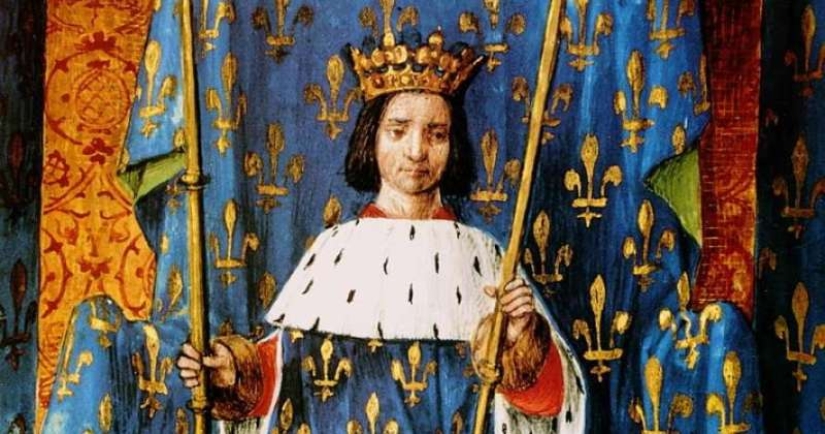
Charles VI of the Valois dynasty was born in 1368 and became the first person of royal blood to receive the title of heir to the Dauphin. Little is known about the childhood of the mad monarch. At the age of 12, he was left an orphan and was immediately crowned. But his power was formal, since the kingdom was ruled by regents - uncles and cousins. There were many of them and this period was even called the "Marmuset Era", that is, the "Era of Advisers".
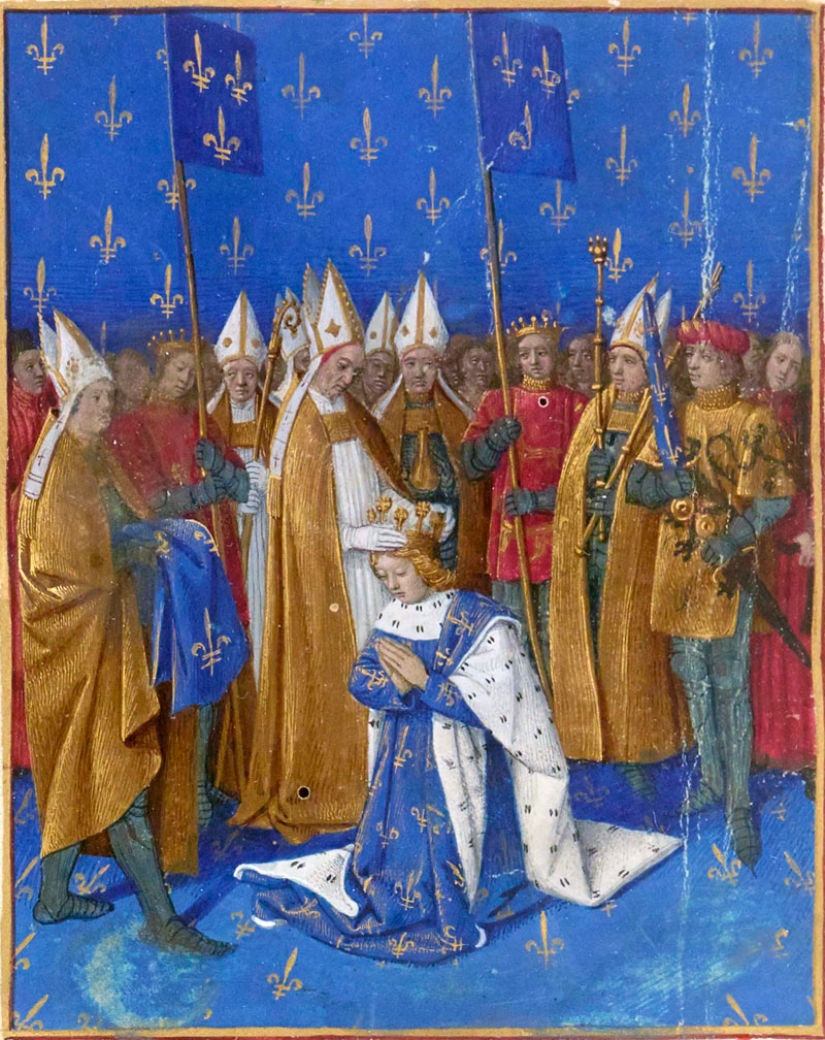
Numerous historical sources do not mention any deviations from the young king. Among his relatives on the Valois line, in general, everyone had a strong psyche. The questions were only to Karl's mother, Jeanne de Bourbon. After the birth of her seventh child, she suffered a serious nervous breakdown and, they say, went crazy. Her brother Louis II de Bourbon, though not insane, had a tendency to depression and strange actions.
When Charles VI turned 17, he wished to get married. As a spouse, the King of France wanted to see the daughter of the Bavarian Duke Stephen III the Magnificent Isabella. They say that it was not a marriage of convenience, as is customary among kings, but true love. Isabella was pretty and Carl just lost his head.
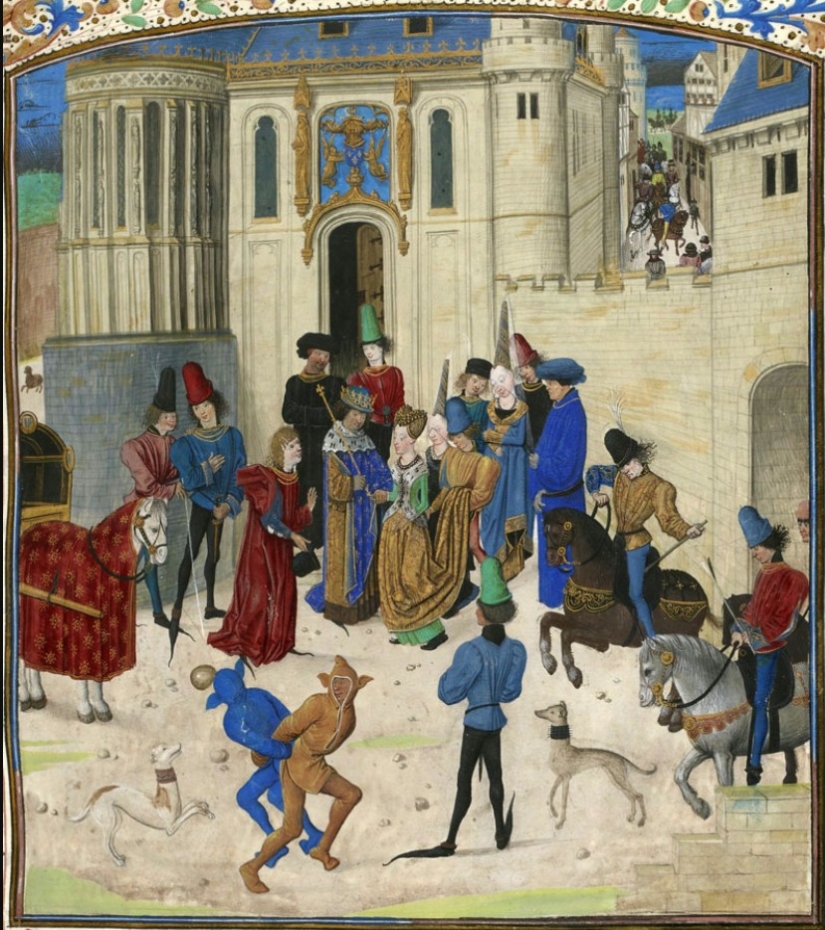
But it seems that Charles was the only person in the kingdom who loved Isabella. The young queen immediately became very unpopular both at court and among the people. It was said that the German woman is very dissolute and changes lovers like gloves. But if you do not take into account gossip and rumors, the beginning of the married life of the king was quite happy.
But everything changed in the spring of 1392, when 24-year-old Charles VI suddenly came down with an incomprehensible fever. It is not known exactly what the king was ill with, but we know that the illness was accompanied by bouts of fever. In addition, the patient's hair and nails fell out. Court doctors diagnosed malaria – this disease was already well known to medicine. In fact, it could be typhus or even encephalitis.
The king's illness dragged on, but over time he began to get used to the attacks and returned to his duties. In the summer of 1392, the sick Charles even went to war. The king had to lead a campaign against the rebels in the lands of the Duke of Brittany. During this military campaign, signs of the sovereign's insanity began to appear for the first time.
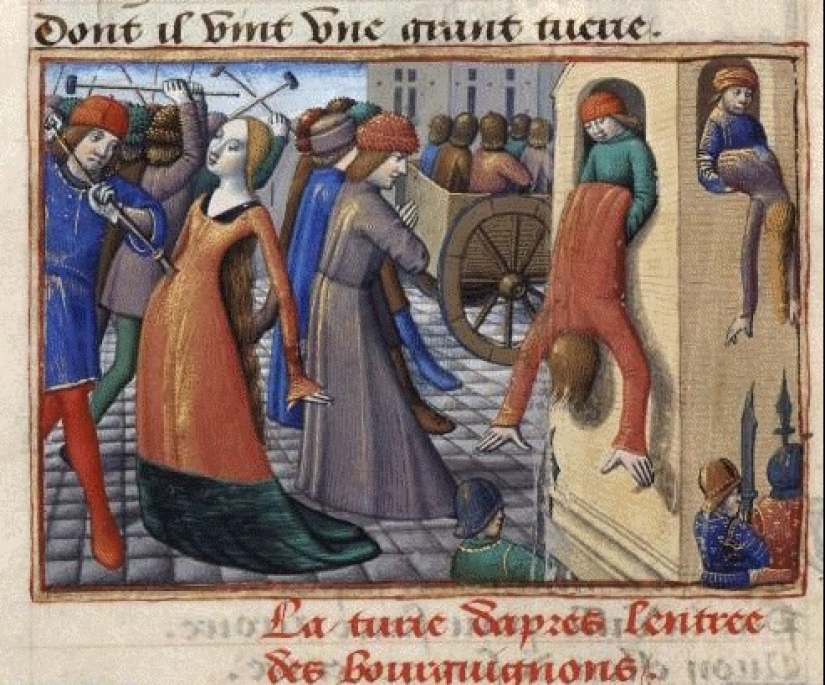
Never before inclined to torture and executions, Charles VI ordered to kill not only rebellious aristocrats, but also their servants. Many were subjected to sophisticated torture before their deaths, and their bodies were exposed for intimidation. That same summer, the king's subjects noticed the inadequacy of their lord. Karl made strange speeches, gesticulated at random, and even behaved indecently and rudely, like a commoner.
One day, when the king's army was riding out of the forest, a page dozing in the saddle dropped a spear and it clanged loudly against someone's helmet. The sharp sound made Karl extremely excited. The armored king drew his sword and shouted "Forward to the traitors! They want to hand me over to the enemy!" he rushed at his guard.
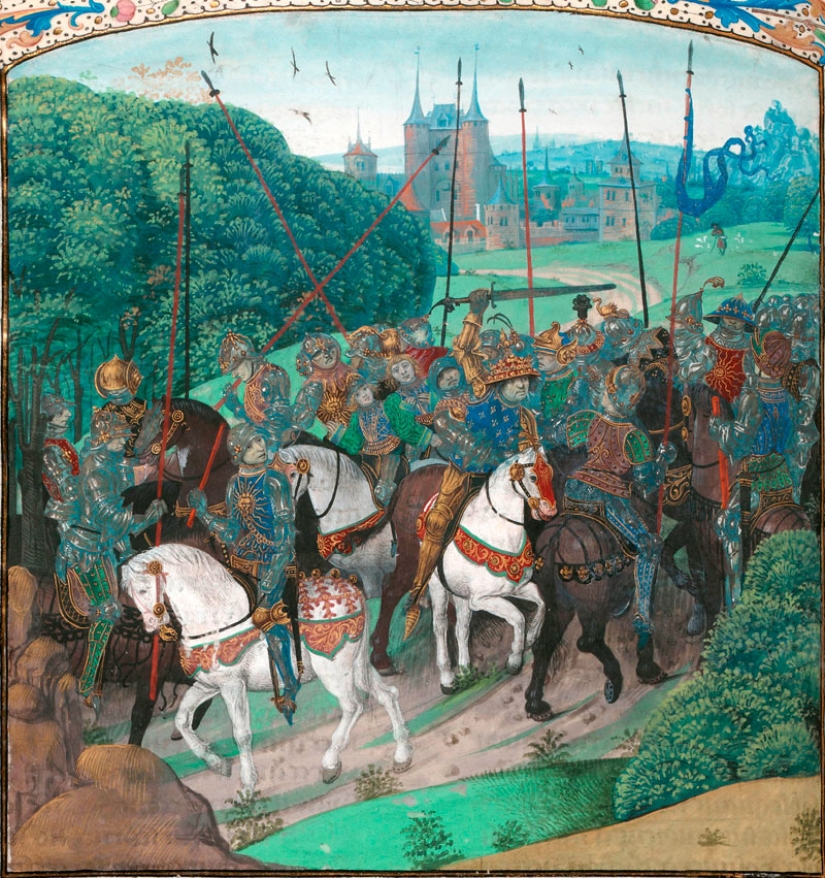
Karl slashed right and left with his sword, and his soldiers could only dodge and flee. The crazy king could be twisted only after an hour. By that time, he had already killed five knights to death and wounded several more people. After an attack of insanity, the king fell into utter apathy, and then completely lost consciousness. For two days Karl lay motionless and only the court doctors noticed a barely glimmer of life in him. The records of that time preserved a description of the patient's condition:
Then the king suddenly woke up, but he didn't recognize anyone and was very weak. He was prescribed complete rest and enhanced nutrition, which soon bore fruit. Karl gradually began to recover and the bouts of insanity receded from him. Unfortunately, an event soon occurred that again plunged the King of France into madness.
The king's wife Isabella started a masquerade ball, in which Charles himself was to take part. The monarch and five courtiers were dressed up as savages. As costumes, overalls made of linen fabric were used, to which a hemp depicting wool was attached outside with resin.
When the monarch and his companions were fooling around among the guests, a spark from the torch hit one of the costumes, causing it to burst into flames. A moment later, everyone was on fire, including the unlucky King Charles VI. His life was saved by the 15-year-old Duchess Jeanne of Berry.
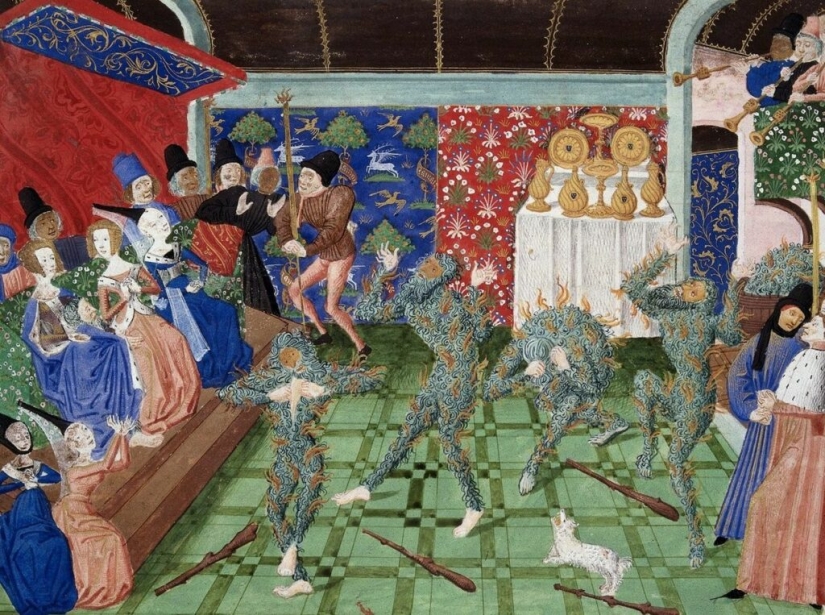
The girl deftly knocked the rushing Karl off his feet and covered him with her skirts. Without access to oxygen, the fire went out and the king escaped with fright and trifling burns. Four aristocrats posing as savages were burned alive in their linen suits. This case has gone down in history as the "Ball of the Flames". The tragedy affected Karl so much that the bouts of insanity returned again, and in a more severe form.
Charles became suspicious and unsociable, hid from the courtiers and sometimes did not recognize his wife Isabella. Gradually, the bouts of insanity became more and more prolonged, and the glimpses of reason became episodic. The court doctors performed a skull trepanation on the king to "reduce the pressure on the brain." Karl felt a little better, but only for six months.
In 1395, Charles VI began delirious persecution. He was afraid not only of strangers, but also of his wife. The king constantly demanded that she be removed and not allowed to approach him anymore.
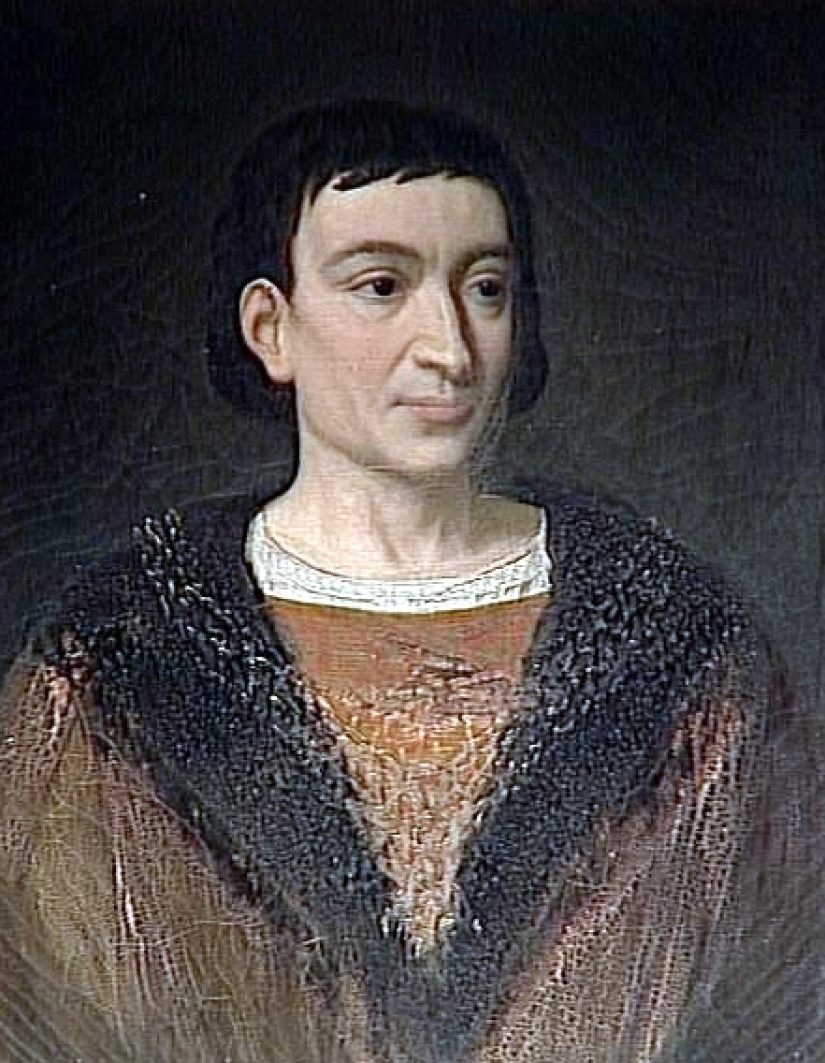
Karl was running around the palace in a complete frenzy, turning over furniture and for some reason called himself Georg. They tried to treat the King in various ways, but it was all in vain. However, soon those close to him noticed that religion eased the patient's condition and began to indulge him in every possible way in his Christian endeavors.
The French monarch suddenly became incredibly pious and traveled from one monastery to another. He prayed fanatically before the relics of the saints and it became easier for him. There were days when the disease completely receded and Karl looked like a healthy person and also reasoned. But this rarely happened.
Over time, the madness of the king began to take more and more intricate forms. Pope Pius II wrote that sometimes it seemed to Charles that he was made of glass. At such moments, he begged others not to accidentally break it. The king covered himself with pillows and even inserted metal rods into his clothes to protect his fragile body.
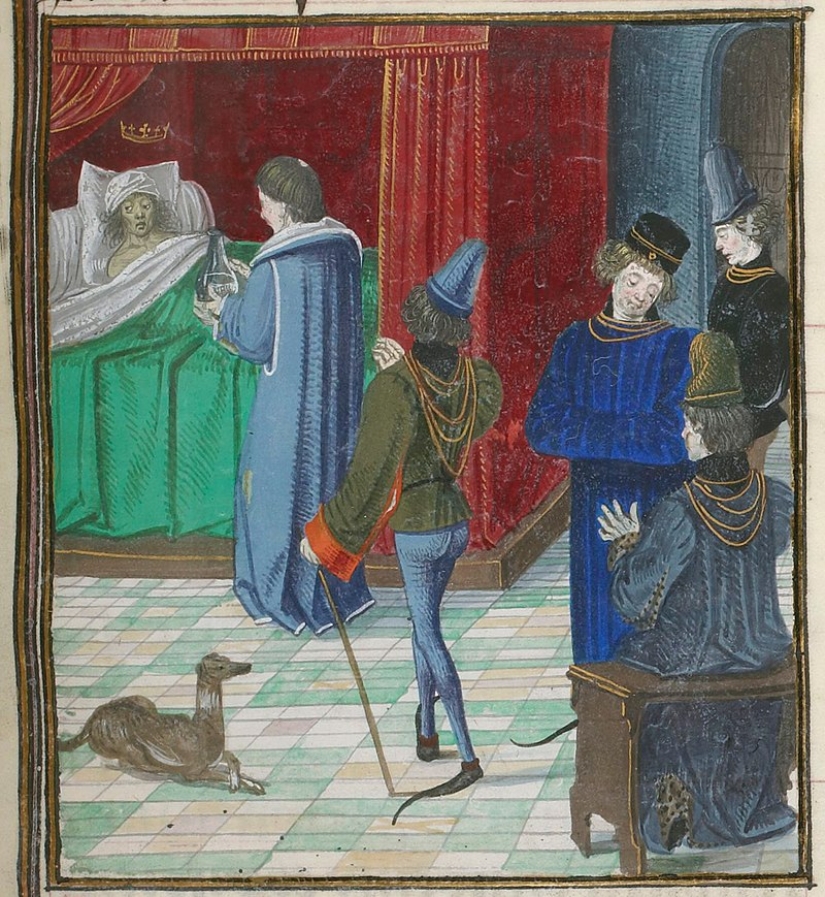
By 1405, madness had completely taken possession of the king and there were no glimpses of consciousness. Karl refused to change clothes and wash, did not allow himself to be shaved and was constantly hiding. He became lousy and began to smell like a homeless tramp, and his body was covered with ulcers. Desperate courtiers, on the advice of some doctor, decided to conduct a shock therapy session. They disguised themselves as servants of the devil and began to threaten the king with a fiery hell. Only thanks to this, Karl was able to shave, wash and change clothes.
In total, Charles VI the Mad suffered from insanity for about 30 years. During this time, according to various sources, he had from 44 to 52 episodes of complete insanity. At such moments, the monarch was locked in his residence, and windows, doors and balconies were reinforced with bars. While the mad king was fooling around in his apartments, there was confusion and civil strife in the country. The potential heirs to the throne, Armagnacs and Bourguillons, started a war among themselves, challenging the right of succession to the throne.
A little later, the Hundred Years' War, which had subsided for some time, resumed. In it, the French, led by the mad king, were not very successful. All these upheavals have brought France to the brink of collapse. The kingdom could at any moment crumble into separate duchies and cease to exist.

Charles VI himself only added fuel to the fire. He, believing the rumors, began to suspect his wife Isabella of numerous infidelities. But the most dangerous thing for the state was that the crazy king openly declared that the queen had "worked up the heirs on the side."
Everything ended up in one of the most unfavorable scenarios. The heir of Charles VI the Mad was the English king Henry V, who married his daughter Catherine. The torments of Charles himself ceased on October 21, 1422. The king died in Paris, in the Palace of Saint-Paul, abandoned by everyone, surrounded by a few remaining loyal servants.
Before that, the king had been lying in malarial fever for 37 days. Charles was cared for not by skilled court doctors, but by his daughter Odette and granddaughter Margarita. However, the king no longer cared – he had not recognized anyone for a long time. He also went to another world without the slightest glimmer of consciousness.

The reason for the long-term madness of Charles VI still makes historians and doctors argue. Someone believes that the king fell victim to Bourbon heredity. There are also those who are sure that the unfortunate Karl was poisoned with ergot for many years by someone close to him. The symptoms, by the way, are very similar. Will we ever know the answer to this riddle?
Recent articles

In life, every person has a case when he is on the verge of death. Sometimes fate gives you one chance, rarely more. Canadian ...

Folk remedies used to treat ailments in Russia were numerous and varied. The carriers of knowledge about the means and methods of ...

Unfortunately, during the war, it was rarely possible to hand over the bodies of the dead to their relatives. During particularly ...